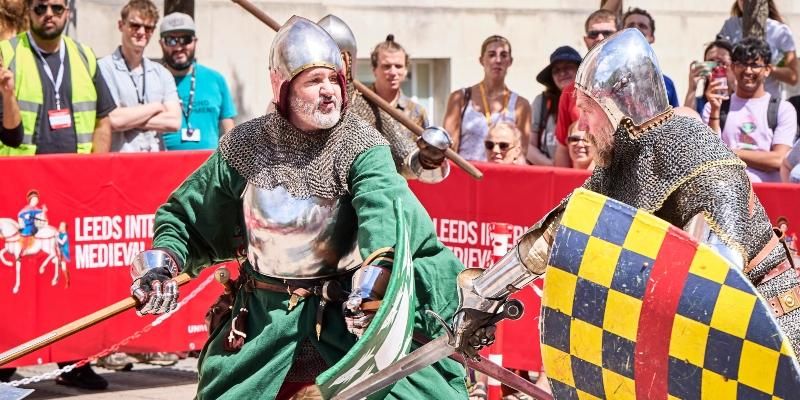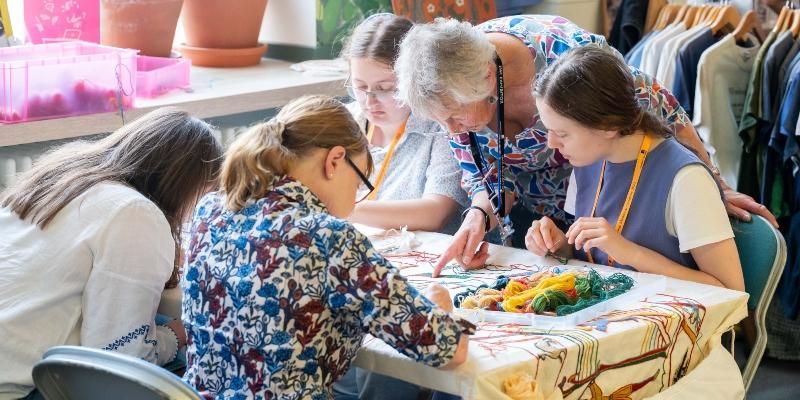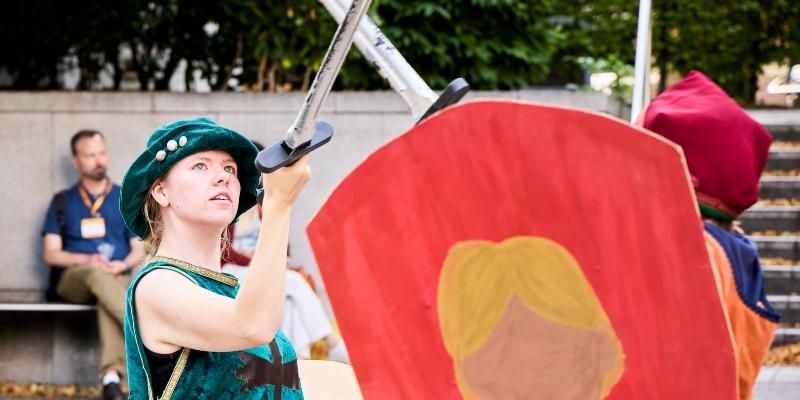
Falconry, fashion and fighting with swords took thousands of visitors to the University of Leeds back to the Middle Ages.
This year’s largest academic gathering across Europe in the humanities, the International Medieval Congress (IMC), included an opportunity for people to view and contribute to an embroidered artwork called the La Mora Tapestry, modelled on the Bayeux Tapestry.
The La Mora Tapestry, named after the battleship that Matilda of Flanders gifted to her husband William for him to sail to England, is being donated to France as part of its celebrations marking 1,000 years since William the Conqueror was born.
It was recently announced that the original Bayeux Tapestry, as part of those commemorations, will be returning to the UK next year after more than 900 years.
Delegates had a chance to be part of history as they contributed to the La Mora Tapestry after being shown how to use the correct stitches, with materials replicating those used for the Bayeux Tapestry.
The Congress was fully hybrid, with more than 2,400 people on site and hundreds online enjoying academic debates throughout the week.

Embroidery proved to be a major theme of this year’s IMC as a fashion show was held for the first time, featuring luxurious embroidered silk and velvet gowns from the 11th to 16th centuries.
Textile artist Tanya Bentham recreated the costumes based on historical manuscripts, paintings and tapestries. She drafts her own patterns and largely hand stitches her costumes, using medieval techniques.

A mysterious dragon also made its debut. This year’s souvenirs featured the fierce looking, box-shaped dragon after the quirky image was discovered in the archive of Jane Oakshott.
Jane studied at the Graduate Centre for Medieval Studies, the precursor to today’s Institute for Medieval Studies at the University of Leeds. Along with fellow medievalists, Jane staged a groundbreaking production of the York Mystery Plays on campus in May 1975, using pageant wagons for the first time in centuries.
A lively drawing of a dragon, created by Helen Taylor, leapt out at Dr Marta Cobb as she sifted through the 50 year-old archive of materials used in the York Mystery Plays and in an earlier traditional Mummers’ play. She decided the dragon needed to be part of the action in 2025 and he appeared on t-shirts, tote bags and notebooks at the Congress.
On Thursday the event was opened up to the public who witnessed birds of prey, medieval sword fighting, medieval singers, dancers, actors and displays of arms and armour.

Medieval met modern this year as delegates learned how they could enhance images, uncover obscured features and reassemble fragmented manuscripts through the International Image Interoperability Framework (IIIF).
The Framework has introduced a set of open standards for sharing high-quality digital versions of artworks, books, newspapers, manuscripts, maps, scrolls and other important materials from anywhere in the world.
This is the fourth year of the IMC being hybrid with more than 1,000 hours of recorded material being made available to view after the event.
IMC Director Dr Axel Müller said “We’re proud to make the IMC more accessible by building a truly hybrid experience.
“We are sure it will have been a memorable experience for all as we have introduced so many new elements to the Congress this year and also laid foundations for the future in which enthusiastic researchers can access important historical documents more easily than ever before.”
Further information
For more information contact Jane Lewis by emailing j.lewis3@leeds.ac.uk or the press office by emailing pressoffice@leeds.ac.uk